On July 28 four brave French climbers accomplished the remarkable feat of summiting K2 the worlds second-highest peak, without the aid of backup oxygen. Among them was Benjamin Vedrines who set an surprising record by reaching the summit in just 11 hours. But the real mystery began when the climbers fell silent about their descent, leaving many to wonder how they made it down one of the planet’s most dangerous mountains.
After returning from Pakistan, the climbers broke their silence with a revelation that stunned the mountaineering community: they all paraglided down from the summit. This daring move came despite a presumed ban on paragliding following the tragic death of a Brazilian cross-country pilot.
Jean Yves Fredriksen, better known as Blutch among his peers, stood out not only for his breathtaking descent but also for his audacious ascent. Blutch took on K2 by linking several of the mountain’s most challenging routes— the Polish line along the central rib of the South Face, the treacherous Messner Traverse, and the Cesen route on the SSE spur—all alone, in a non-stop, 39-hour marathon climb. When asked why he chose such a difficult and only path Blutchs response was as bold as his climb: “I just hate crowds.”
Their story is a testament to human strength pushing the limits of whats possible in one of the harshest environments on Earth.
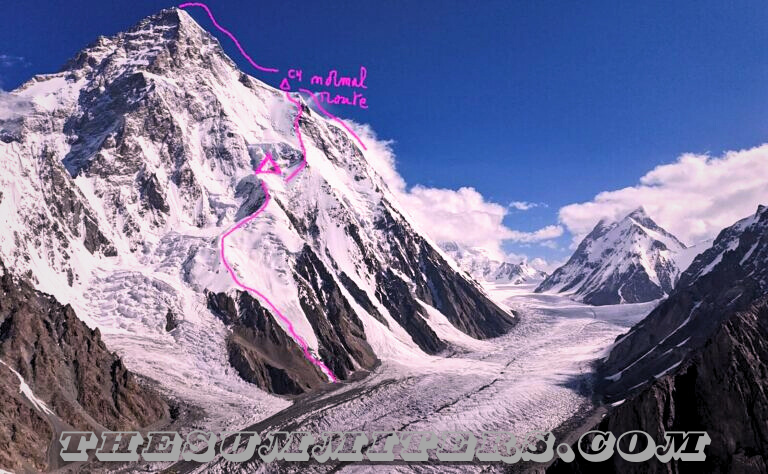
The 49-year-old adventurer is a true renaissance man—a paragliding legend, extreme skier, accomplished alpinist, and even a musician who never forgets to pack his violin on every expedition. For years, he envisioned an epic journey: conquering K2, cycling across the vast Tibetan plateau, and then taking on Everest’s formidable North Side, combining a climb with a daring paraglide descent.
“But with the complex situation in China, I decided to focus solely on K2,” he explained, prioritizing one dream over the other.
This past spring, Fredriksen set up camp at the base of K2, surrounded by a diverse group of fellow adventurers: Benjamin Vedrines, photographer Seb Montaz, Liv Sansoz, and Seb Roche. Though they shared the same rugged terrain, each had come with their own distinct ambitions, driven by their individual passions for the mountains.
A Fresh Take on Acclimatization
Fredriksen took a unique approach to acclimatization during his climb. Rather than moving between multiple camps like most climbers, he zeroed in on one camp at 6,600 meters, positioned just before the perilous Messner Traverse. This section is particularly dangerous, with a massive serac hanging ominously above.
“I made the trip up and down to that camp about seven times, hoping to get a shot at the summit,” he said, recounting how either poor conditions or bad weather kept forcing him to retreat. This year’s unusually heavy snowfall only added to the challenge.
His strategy was clear: avoid the Messner Traverse as much as possible, with no plans to rotate to higher altitudes. Fredriksen’s approach was inspired by the renowned Swiss climber Jean Troillet, who frequently partnered with the legendary Erhard Loretan.
“Troillet’s method was to acclimatize between 6,000 and 7,000 meters but never sleep at those heights,” Fredriksen explained. Once they were acclimatized, they’d go for a fast, decisive summit push. This philosophy of efficiency and risk management clearly shaped Fredriksen’s strategy, guiding him through one of the world’s most dangerous climbs.
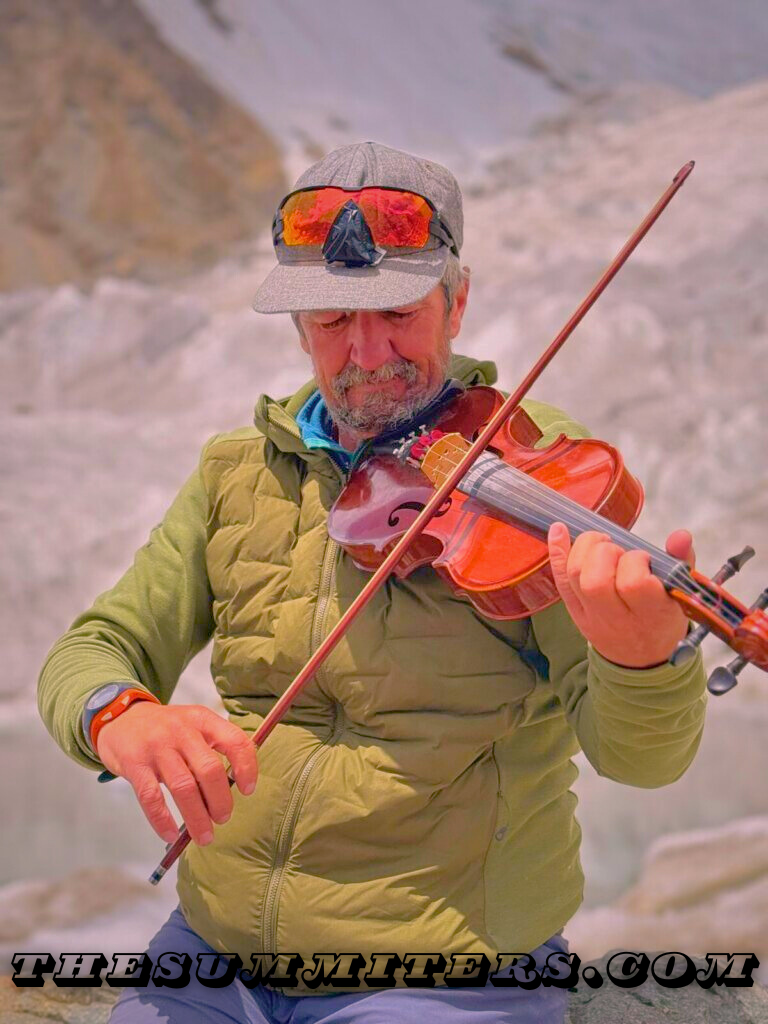
At Base Camp, Fredriksen engaged in some thought-provoking discussions with fellow climbers about their acclimatization strategies. While many of them preferred spending nights at higher camps like Camp 3 or Camp 4, Fredriksen took a different approach. That’s just not my way of climbing,” he said. “The summit of K2 is only 2,000 meters higher than my high camp. I actually gain more altitude than that when I’m climbing Mont Blanc in Chamonix.
Every ascent Fredriksen made was accompanied by his ultra-light paraglider, which he carried with him at all times.
“The paraglider is like my safety net,” Fredriksen explained. With it on my back, I know that if anything goes wrong, I can always make a quick escape and fly back down. His paraglider was remarkably light, weighing just one kilo, plus an additional 300 grams for the harness.
Fredriksen didn’t lock himself into a probable route. Instead he adapted to the ever changing conditions of the climb, guided by a single principle: steer clear of the crowds.
The Ultimate Climb to the Summit
When a brief weather window finally opened up, it prompted everyone at K2 Base Camp to spring into action.
“The snow was still quite deep, but the forecast was promising,” Fredriksen said. On the day of my summit attempt, there wasn’t a breath of wind, and the temperature was perfect.
Fredriksen set out from Base Camp on July 26 and spent the night at his high camp, preparing for the final ascent.
“I began my climb at first light on the 27th, around 5 a.m.,” he explained. “I wanted to avoid crossing the Messner Traverse in the dark. It took me just 10 to 15 minutes to navigate that treacherous icefall. Once I was safely beyond it, I continued climbing through deep snow for another two hours until I reached the Cesen route at around 6,900 meters.”
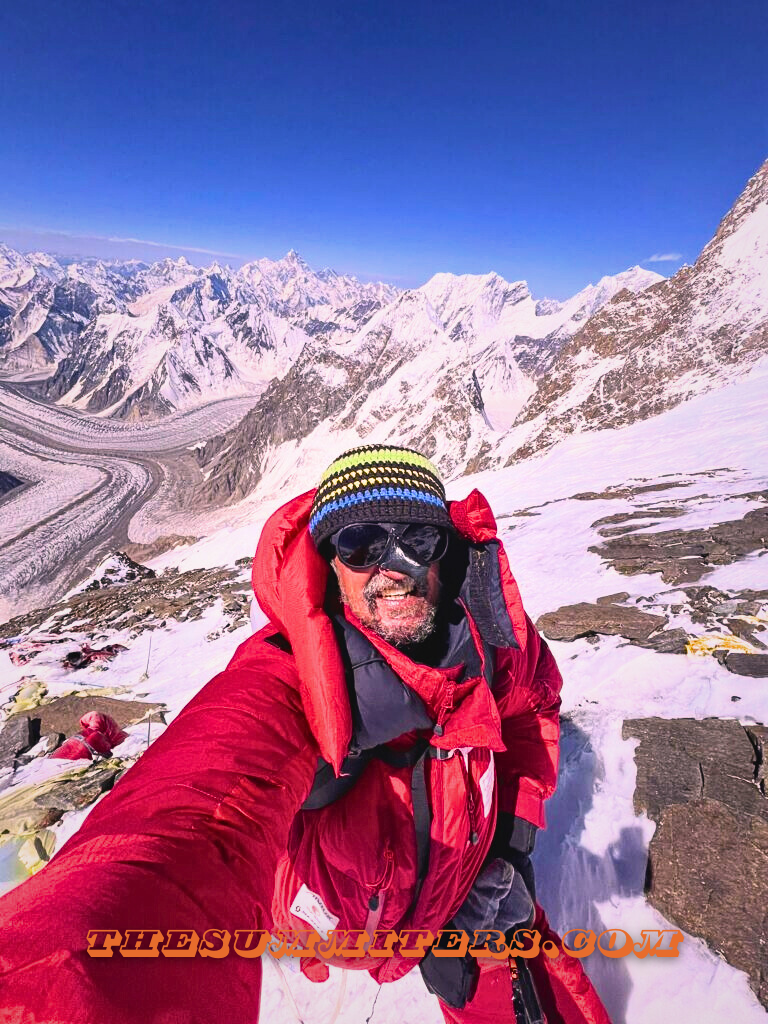
On the Cesen route, Fredriksen discovered some old fixed ropes from the 2019 expedition, the last team to tackle this path. He used these ropes to make progress up to 7,200 meters. “After that, it was uncharted territory,” he remarked.
Fredriksen then explored a couloir for about an hour, but it ended up being a dead end due to the heavy snow. Forced to retreat, he navigated a rocky section to the right, which eventually connected him with the Abruzzi Spur route, near Camp 4. By now, it was around midnight. He continued onward without any rest, as he had neither a sleeping bag nor a tent. Luckily, the Nepalese and Pakistani teams, along with their clients, were already ahead of him, so he didn’t need to break trail through the snow.
“I didn’t get any sleep, but I did take three breaks to melt snow and stay hydrated. This time, I brought a stove along,” Fredriksen explained. For instance, I paused before crossing the Great Serac when I saw climbers queuing up there. I used the opportunity for a 30-minute break to drink and let the line move along.”
Fredriksen reached the summit at 3 p.m. He stopped just shy of the top and took a brief nap while Naoko Watanabe from Japan and her Sherpa guide took their summit photos and began their descent. As Fredriksen prepared to head down himself, he encountered a problem: while the calm, windless conditions were great for climbing, they were far from ideal for paragliding back down.
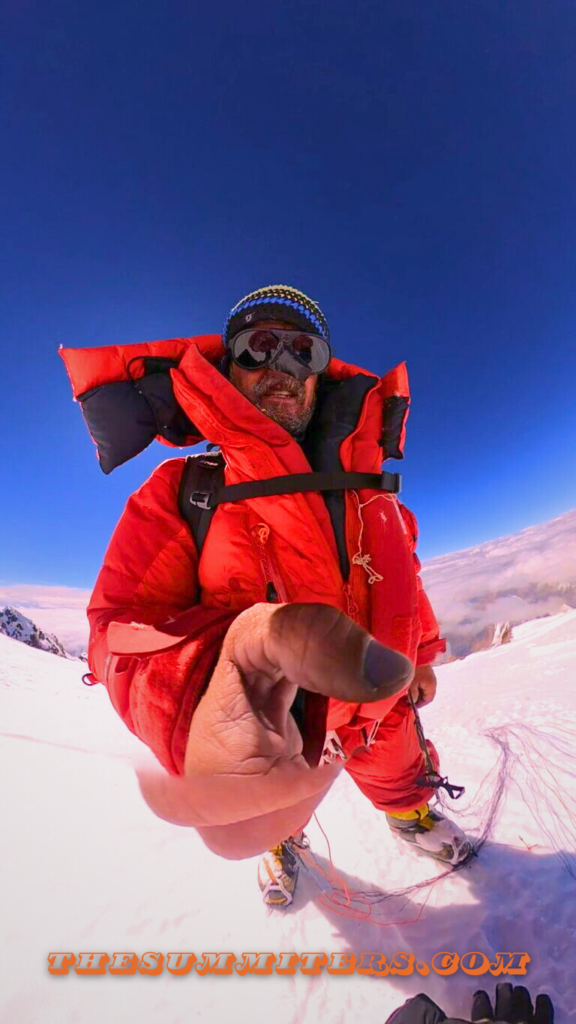
Waiting for the Perfect Breeze
“The take-off was a real struggle due to the complete lack of wind,” Fredriksen said. “I spent around 90 minutes trying to get the paraglider to inflate properly, but it just wouldn’t stay up. Then, finally, a gentle gust of wind came along, and it was just enough to get me airborne.”
Once in the air, Fredriksen flew a minute north into China, then veered right along the east face of the mountain. He made another right turn as he approached the Bottleneck, navigating the challenging descent.
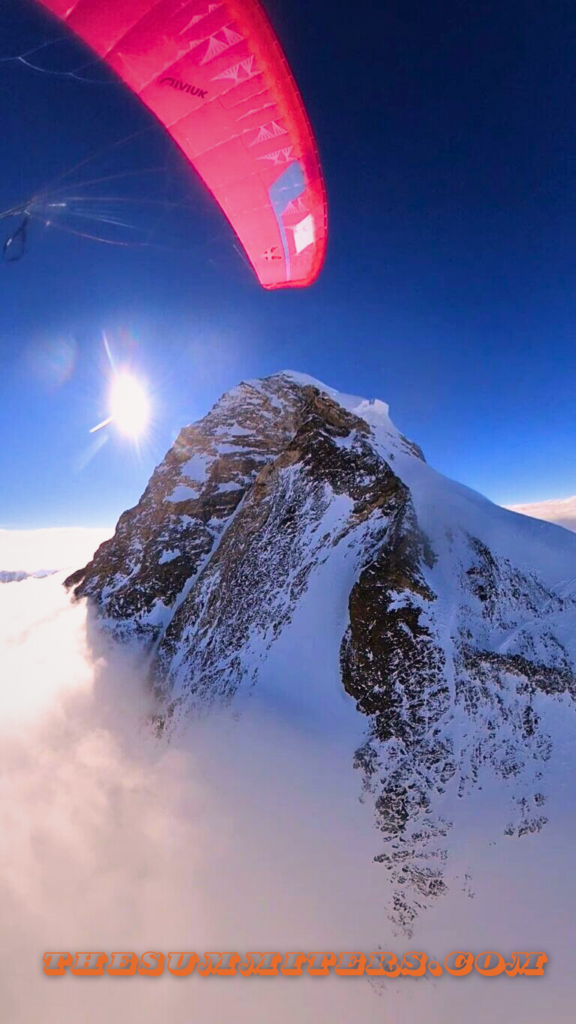
At 6,800 meters, Fredriksen faced a dense layer of clouds that made visibility and descent difficult. “I had to search diligently for a gap in the clouds to continue descending safely,” he said. Luckily, after circling around, I found a small break in the cloud cover right near the South Face. It was an amazing moment.
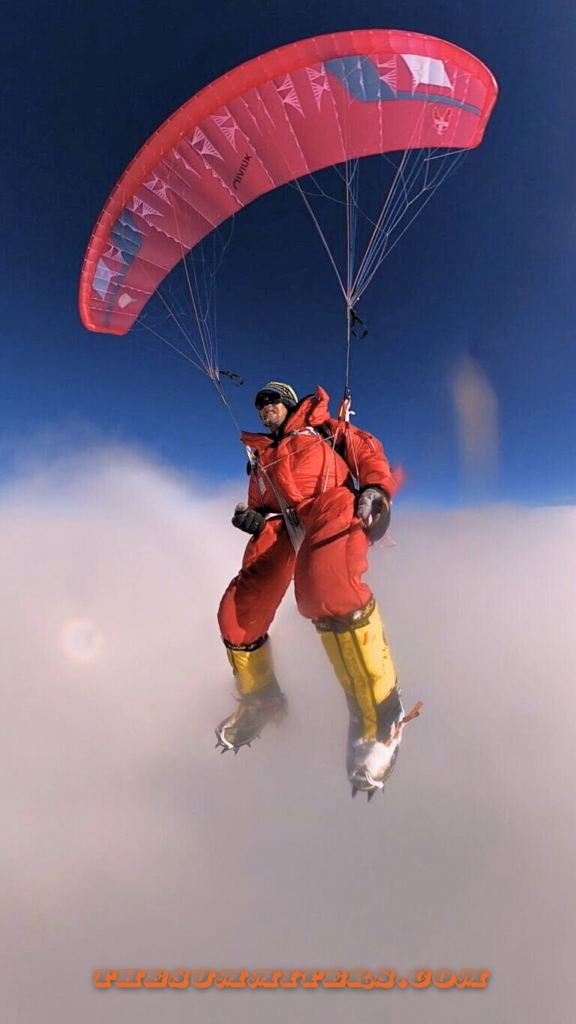
Fredriksen described the fog as being a thick 100 meters deep, but then it suddenly lifted. In that instant, I was able to see my camp and the footprints I had left in the snow on the Cesen route, he said.
Following a 20-minute flight from the summit, he touched down in soft snow, just five meters from his tent at 6,600 meters.
No Place to Hide
Fredriksen revealed that Vedrines had launched about two hours before him, and he met Sansoz and Roche at the summit, just before he started his descent. An Italian climber on the summit even assisted the other pair with their take-off.
With so many teams around and paragliding supposedly banned, it was a challenge to stay under the radar. Fredriksen mentioned that they had used their paragliders multiple times during the expedition, both before and after the ban was enforced.
“We were extremely careful about it,” he said. We kept a low profile, avoided drawing attention, and only flew very early in the morning or late at night. He acknowledged that some individuals at Base Camp had reported them to the liaison officer, who then inspected their gear for paragliders. “However, the liaison officer never came to check on us after we descended from the summit,” Fredriksen added.
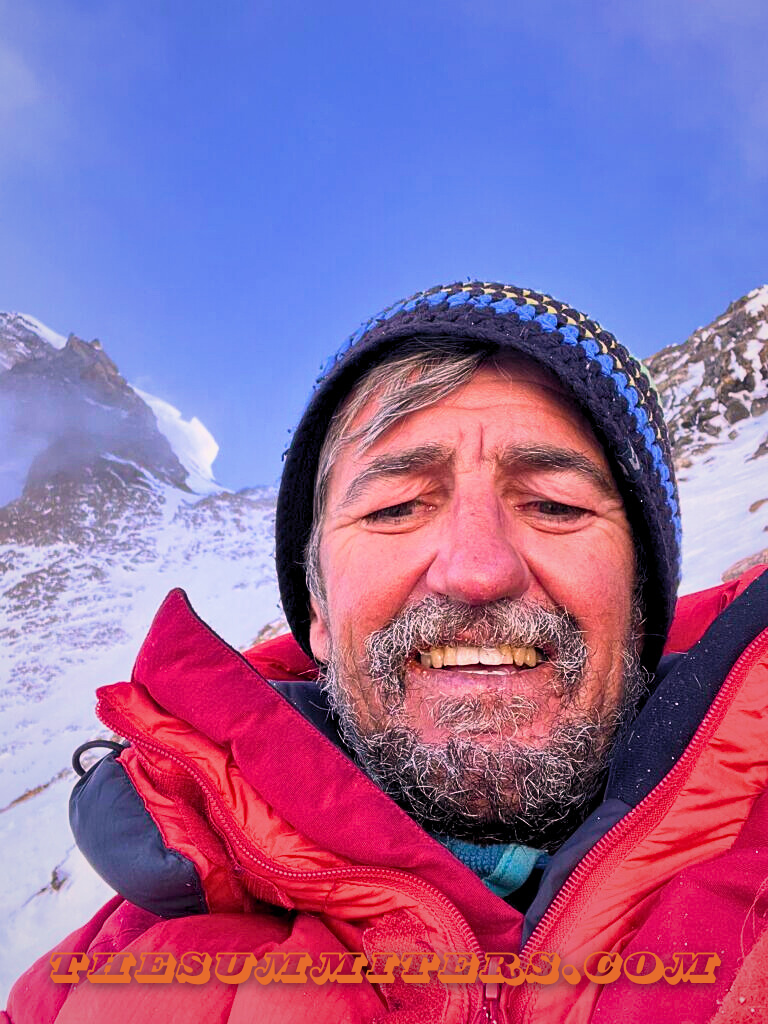
The pressing question now is whether Pakistani authorities will take action against the climbers. They could face not only a ban on paragliding but also restrictions on climbing in the country. Authorities became particularly alert following the incident involving Brazilian pilot Rodrigo Raineri, who allegedly flew before his team’s No Objection Certificate (NOC) was officially approved. The situation spiraled into chaos, resulting in the arrest of Ali Saltoro, the expedition outfitter from Alpine Adventure Guides, who was detained for several days.